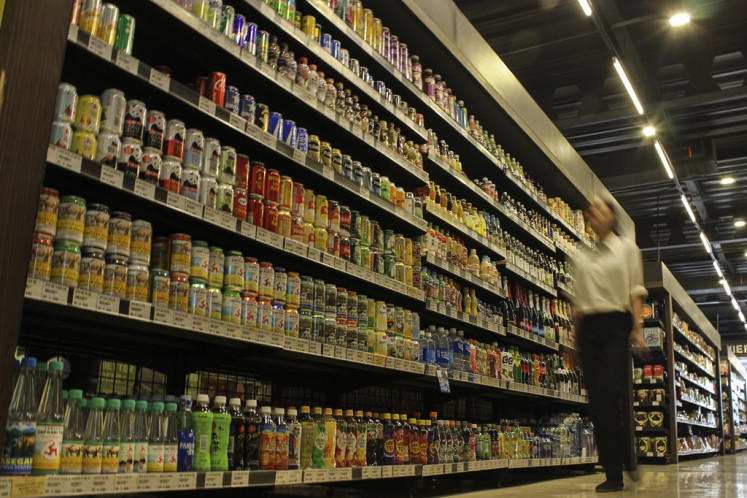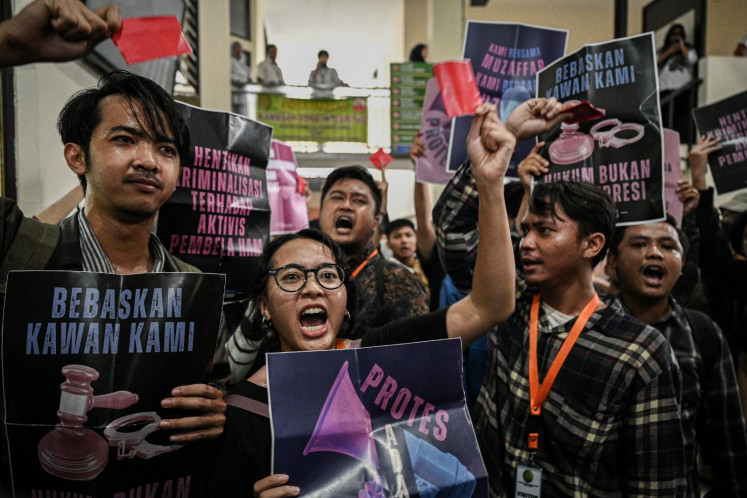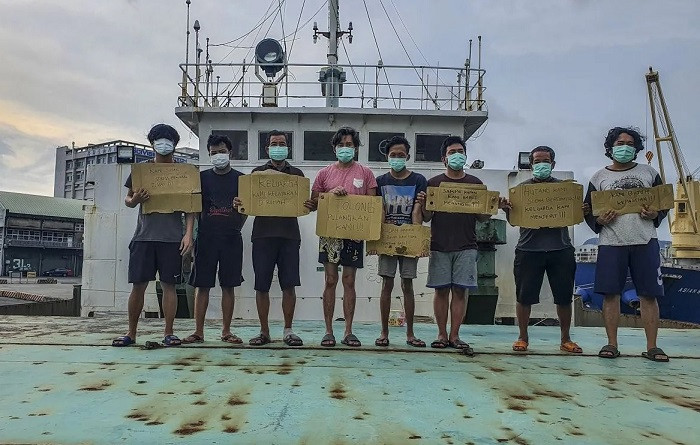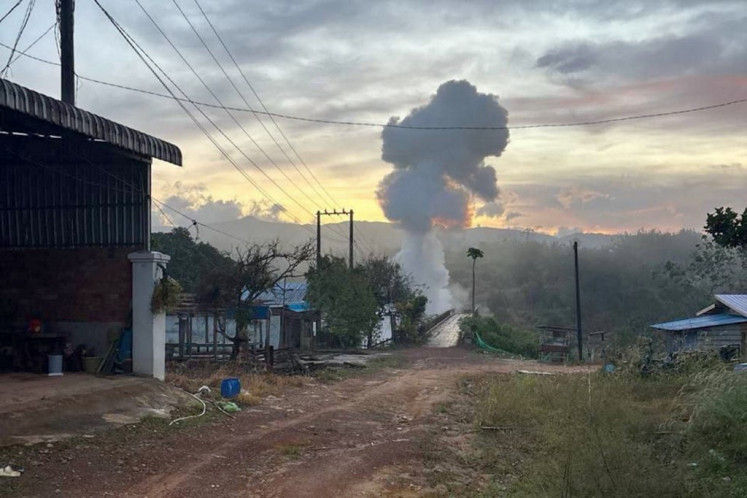Popular Reads
Top Results
Can't find what you're looking for?
View all search resultsPopular Reads
Top Results
Can't find what you're looking for?
View all search resultsBalancing Indonesia’s ambition in nickel downstreaming with a dose of realism
Despite its dominance in nickel production, Indonesia’s share of global battery production capacity remains a mere 0.4 percent.
Change text size
Gift Premium Articles
to Anyone
 Nickel smelter chimneys spew a column of emissions on July 7, 2024, into the air above the Indonesia Weda Bay Industrial Park in Lelilef, North Maluku. Despite coal making up 67 percent of Indonesia’s 2023 energy mix, the country is shifting toward cleaner sources, impacting the nickel industry, which is vital for electric vehicle (EV) batteries. (AFP/Azzam Risqullah)
Nickel smelter chimneys spew a column of emissions on July 7, 2024, into the air above the Indonesia Weda Bay Industrial Park in Lelilef, North Maluku. Despite coal making up 67 percent of Indonesia’s 2023 energy mix, the country is shifting toward cleaner sources, impacting the nickel industry, which is vital for electric vehicle (EV) batteries. (AFP/Azzam Risqullah)
T
he new administration’s position on nickel downstreaming will likely remain firm, President Prabowo Subianto has said. However, it’s worth reflecting on the path taken so far. The global green transition is messy and rife with industrial competition.
China’s dominance in the clean technology supply chain worries many countries about their future competitiveness, and Indonesia is no exception. With roughly half of the word’s nickel production—an essential mineral for the electric vehicle transition—Indonesia should, in theory, hold significant power in setting standards for nickel development investment. Yet despite the promise of nickel-to-EV potential, that leverage seems elusive.
While Indonesia’s basic nickel processing sector has emerged rapidly, it has been marred by repeated plant explosions and widespread environmental and social impacts. This raises an important question: Why was the bar set so low?
Downstreaming has its merits, evident in the tens of thousands of jobs created. However, there has been too much inward focus and far too little consideration of global market shifts. Despite its dominance in nickel production, Indonesia’s share of global battery production capacity remains a mere 0.4 percent. Two thirds of its nickel output still goes to the stainless steel industry, while intermediate products for battery production are only beginning to emerge. Additionally, the country is competing fiercely with its neighbors through EV incentives and tax breaks to lure battery and EV manufacturers into building factories.
So, was the recent surge in nickel smelters even necessary to fulfil Indonesia’s ambition to become an “EV giant”? After all, it is EV demand, not nickel, that drives EV and battery investments. Indonesia’s plan to gradually climb the value chain, starting with mining and smelting, is facing headwinds. Other countries are bypassing these steps, jumping straight into battery and EV production.
Once again, the ladder to the top seems to have been kicked away. It’s time to realize that Indonesia’s EV ambition is compromised and requires a strategic rethink. Recently, Beijing has advised its carmakers to keep the production of key EV elements in China, according to reports, further raising the stakes for Indonesia. All hope is not lost, but charting the way forward requires a dose of honesty.
First, Indonesia needs a clear-eyed assessment of the global nickel, battery, EV and stainless-steel industries. The world has changed since Indonesia’s downstreaming policy was initiated. The incoming administration must understand what benefits the country has forfeited through various incentives and what gains businesses have accrued through access to cheap nickel ore, coal and compromised environmental standards, all while keeping track of whether these benefits ultimately flow abroad or remain in Indonesia.


















